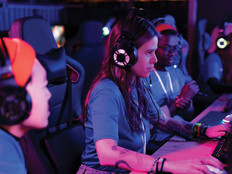Product Review: NComputing M300 Thin Client
There’s been a vast gap in thin client technology for some time — a gulf between simpler PC-sharing clients oriented toward classrooms and enterprise-class thin clients powered by virtual desktop infrastructure (VDI) environments.
On the low end, PC-sharing thin clients typically connect to a single PC over USB cables and offer ease of setup and administration, but are limited in how they can be configured because of the USB tether. On the high end, thin clients built for VDI can run from anywhere on the network, but typically require more horsepower on the back end because they run in one-to-one configurations. They typically require a greater level of administrative sophistication too.
That’s a gap that NComputing is trying to fill with its M300 thin clients. Offering easy setup and administration and more flexibility than most basic PC-sharing solutions, the three-in-one kit makes a suitable desktop replacement.
End-User Advantages
The M300 eliminates the octopus effect of a collection of USB-tethered terminals, and can be integrated into a standard district network environment. At the same time, it allows one instance of a Windows operating system to be shared by up to 45 users simultaneously.
The kit includes one primary server that connects via Ethernet and two additional clients that can be tethered to it via standard CAT-5 Ethernet patch cables. Because it connects over Ethernet, the M300 doesn’t have to be in close proximity to the system hosting it.
And only one of the three clients in the kit — the largest of the three — requires an actual Ethernet connection. The other two connect over Ethernet CAT 5 or CAT 6 shielded twisted-pair cables (not included with the kit), and can be up to 5 meters away from the “master” thin client during use.
The clients each have two USB ports for a mouse and keyboard, and one USB 2.0 port for peripherals and USB-based storage. The master client has two additional USB ports on either side of the client. These are needed to connect to the smaller clients over a USB cable if they’re using USB peripherals.
Why It Works for IT
Thin clients in general can reduce power usage and extend equipment life. NComputing claims that customers can reduce their energy costs by as much as 90 percent and lower their hardware costs by 75 percent by reducing the need for new desktops. Fewer systems to manage means less time performing desktop hardware support. And because the systems hosting M300 clients can be secured in a server room, there’s less trouble managing the infrastructure. The M300 clients have solid-state drives, with no fans or other moving parts that can break, so they have a much longer potential lifecycle than a PC — even one that’s been repurposed as a thin client.
Because the M300 uses Dynamic Host Configuration Protocol, there’s little network configuration required, other than connecting to the server through an Ethernet switch.
Disadvantages
The M300 client is intended to be used as a basic desktop replacement. Even with reasonably high-end hardware hosting the Windows OS, it’s not a good fit for graphically intensive operations. Also, the USB ports on the client don’t support webcams or other isochronous peripherals, so it’s not a good choice for video conferencing, or other streaming applications that require timely communications with a USB device.
It’s also annoying that additional cables are required to support peripherals on the two smaller clients tethered to the master client. But the need to run both twisted-pair and USB cables to the sub-clients in exchange for not needing another network drop is a relatively minor trade-off.






